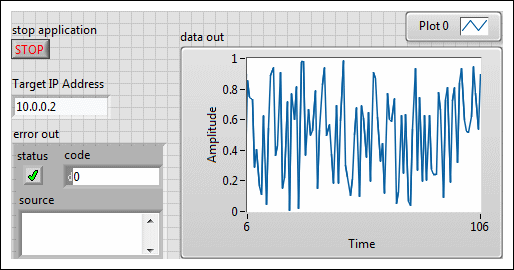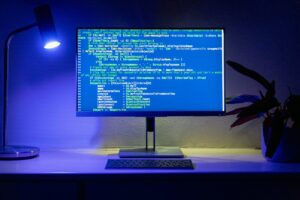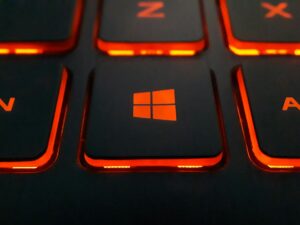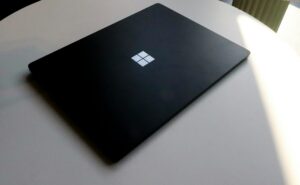Developing LabVIEW Applications for Real-Time Systems

Introduction
Real-time systems play a crucial role in industries where timely and deterministic responses are critical, such as industrial automation, aerospace, automotive, and medical devices. LabVIEW (Laboratory Virtual Instrument Engineering Workbench) by National Instruments offers powerful tools and capabilities for developing real-time applications. This comprehensive guide explores the fundamentals, techniques, and practical applications of developing LabVIEW applications for real-time systems, covering key concepts, implementation strategies, and examples.
Understanding Real-Time Systems
What are Real-Time Systems?
Real-time systems are computer systems that must react to stimuli from the environment within a strictly defined timeframe. They are classified into two main categories:
- Hard Real-Time Systems: Tasks must be completed within a guaranteed deadline; failure to meet the deadline can lead to catastrophic consequences (e.g., automotive control systems).
- Soft Real-Time Systems: Tasks have deadlines that are important but not mandatory; missing deadlines may degrade performance but not cause system failure (e.g., multimedia applications).
Characteristics of Real-Time Systems
- Determinism: Predictable and guaranteed response times to events or inputs.
- Reliability: Consistent performance under varying conditions.
- Concurrency: Handling multiple tasks simultaneously without interference.
Challenges in Real-Time Systems Development
- Timing Constraints: Meeting strict timing requirements imposed by the application.
- Resource Management: Efficiently managing CPU, memory, and I/O resources.
- Synchronization: Synchronizing tasks and ensuring data consistency across the system.
LabVIEW for Real-Time Systems
Overview of LabVIEW
LabVIEW provides a graphical programming environment specifically designed for measurement and control systems, including robust support for real-time applications:
- Graphical Programming: Develop applications using a drag-and-drop interface with dataflow diagrams.
- Real-Time Modules: Extend LabVIEW’s capabilities with real-time execution and deterministic behavior.
- Hardware Integration: Interface seamlessly with DAQ (Data Acquisition) devices, PLCs (Programmable Logic Controllers), and other industrial hardware.
- Deployment Options: Deploy applications to various targets including desktop PCs, real-time embedded targets, and FPGA (Field-Programmable Gate Array) devices.
Key Components for Real-Time Applications in LabVIEW
- Front Panel: User interface where users interact with the application, displaying data and receiving inputs.
Example: Real-Time Control Interface
- Indicators: Display real-time measurements and system status.
- Controls: Allow users to adjust settings or inputs interactively.
- Block Diagram: Graphical representation where application logic, data processing, and control algorithms are implemented.
Example: Real-Time Control Algorithm
- Data Acquisition: Acquire sensor data from DAQ hardware in real-time.
- Control Algorithm: Implement control logic (e.g., PID control) to adjust system parameters.
- Output Control: Send control signals to actuators or devices for real-time response.
Developing LabVIEW Applications for Real-Time Systems
Step-by-Step Guide to Developing Real-Time Applications
- Selecting Real-Time Hardware: Choose appropriate hardware platforms such as NI Real-Time Controllers or CompactRIO systems based on performance and application requirements.
- Real-Time Module Installation: Install LabVIEW Real-Time Module to enable real-time application development capabilities.
- Creating Real-Time Project: Start a new project in LabVIEW and configure it for real-time execution.
- Real-Time Targets: Add and configure real-time targets such as RT Controllers or CompactRIO modules.
- Timing and Scheduling: Define timing settings and execution priorities for tasks.
- Implementing Real-Time Tasks: Develop application logic using LabVIEW’s graphical programming constructs.
Example: Real-Time Data Acquisition and Control
- Data Acquisition: Configure DAQ tasks to read sensor data with precise timing.
- Control Algorithms: Implement PID controllers or custom control logic for real-time control.
- Event Handling: Manage interrupts and events with deterministic responses.
- Testing and Verification: Conduct rigorous testing to ensure application reliability and performance under real-time conditions.
- Simulation: Use LabVIEW simulations and hardware-in-the-loop testing to validate real-time behavior.
- Timing Analysis: Analyze timing performance to meet real-time requirements.
Example: Real-Time Control System
- Objective: Develop a real-time temperature control system using LabVIEW.
- Implementation Steps:
- Hardware Setup: Connect temperature sensors and actuators to NI Real-Time hardware.
- LabVIEW Programming:
- Data Acquisition: Read temperature data in real-time using DAQ modules.
- Control Algorithm: Implement PID control to maintain temperature within a specified range.
- User Interface: Create a front panel with temperature displays and control settings.
- Deployment: Deploy the application to the real-time target and monitor its performance.
Advanced Techniques in LabVIEW Real-Time Development
- Multithreading and Parallelism: Implement concurrent tasks and threads for efficient utilization of CPU resources.
- Deterministic Timing: Ensure precise timing and synchronization using LabVIEW’s timing and synchronization functions.
- Fault Tolerance: Implement fault detection and recovery mechanisms to handle unexpected events or errors.
Practical Applications of LabVIEW Real-Time Systems
Industrial Automation
- Process Control: Control and monitor manufacturing processes with precise timing and response.
- Robotics: Real-time control of robotic arms and automated systems for assembly and packaging.
Automotive and Aerospace
- Embedded Systems: Develop real-time embedded applications for vehicle control systems and avionics.
- Flight Simulations: Simulate and analyze aircraft behavior and performance in real-time.
Medical Devices
- Patient Monitoring: Real-time monitoring and control of medical devices such as infusion pumps and ventilators.
- Diagnostic Systems: Implement real-time data analysis and feedback for medical diagnostics.
Research and Development
- Scientific Experiments: Control and monitor experiments with high precision and real-time data acquisition.
- Test and Measurement: Conduct real-time data collection and analysis in laboratory settings.
Challenges and Considerations
Performance Optimization
- Optimized Code: Write efficient code to minimize execution time and maximize system responsiveness.
- Resource Management: Manage memory and CPU resources effectively to avoid bottlenecks.
Real-Time Constraints
- Timing Analysis: Analyze and validate timing requirements to ensure tasks meet real-time deadlines.
- Interrupt Handling: Implement interrupt-driven tasks and handle priority-based scheduling.
Testing and Validation
- Simulation: Use simulations and emulation techniques for testing real-time behavior without physical hardware.
- Hardware-in-the-Loop (HIL): Validate real-time applications with actual hardware components for accurate performance assessment.
Conclusion
Developing LabVIEW applications for real-time systems empowers engineers and developers to create robust, responsive, and reliable solutions across a wide range of industries and applications. LabVIEW’s graphical programming environment, coupled with its real-time capabilities and hardware integration, provides a versatile platform for designing and deploying real-time control, monitoring, and automation systems. By understanding the fundamentals of real-time system design, implementing advanced techniques, and addressing practical challenges, users can leverage LabVIEW to innovate and optimize processes in industrial automation, aerospace, medical devices, and beyond. As technology advances and demands for real-time responsiveness grow, LabVIEW remains at the forefront, enabling engineers to push boundaries and achieve new milestones in real-time system development.







